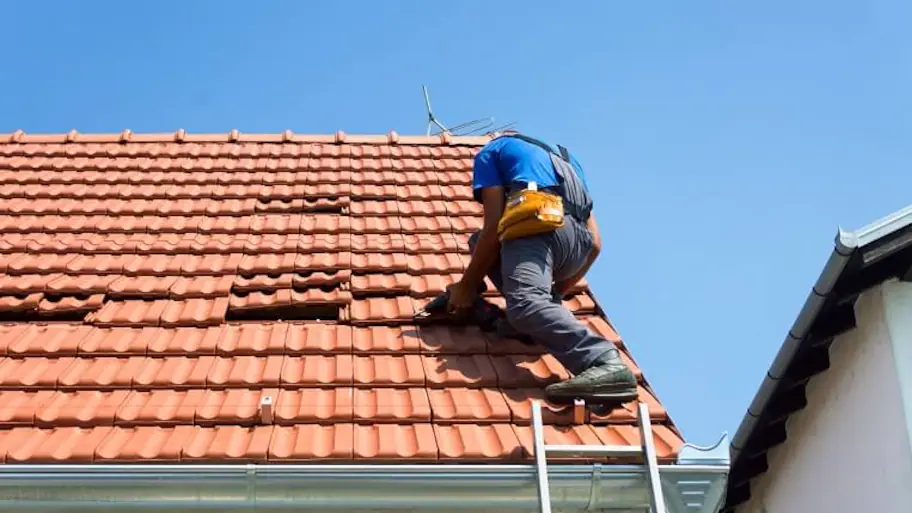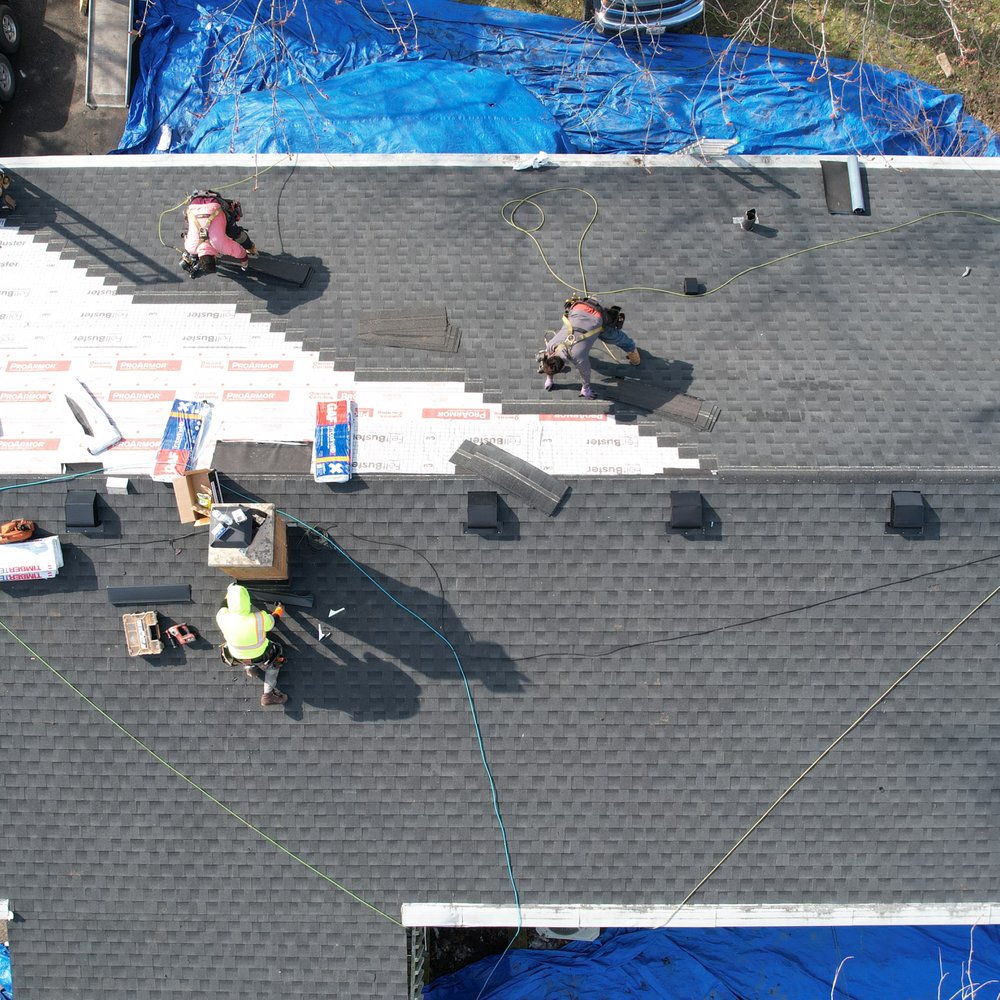The Roof Covering Replacement Process: What to Get out of Beginning to Complete
Understanding the roof replacement process is essential for house owners considering this substantial investment. Each phase, from the preliminary evaluation of your roof's condition to the thorough setup of new products, plays a vital function in making certain long-term longevity and performance.
Analyzing Your Roof Problem
Analyzing your roofing system problem is a critical action in the roofing system substitute procedure, as it determines the necessary actions to make sure architectural integrity and long life. A comprehensive assessment starts with an aesthetic inspection, where indicators of wear, damage, or wear and tear are identified. Try to find missing roof shingles, curling edges, or granule loss, as these indicate possible susceptabilities. In addition, look for leakages or water discolorations on indoor ceilings and walls, which can symbolize underlying problems.
It is additionally important to analyze the roofing system's blinking and rain gutters, as these parts play an important duty in directing water away from the roof and avoiding dampness accumulation. Any kind of rusted or harmed flashing ought to be kept in mind, as it may need repair service or substitute - roof replacement. Take into consideration the age of the roofing system; most roof materials have a lifespan that, when exceeded, warrants replacement.
Choosing Substitute Materials
Picking the best products for your roofing system replacement is important to attaining sturdiness, looks, and energy performance. The option of roof covering materials can substantially impact the life-span of your roof, as well as its efficiency under various weather. Typical alternatives include asphalt tiles, steel roofing, tile, and slate, each offering distinct benefits and disadvantages.
Metal roof covering, recognized for its long life and resistance to extreme weather condition, can additionally improve power effectiveness through reflective buildings. Tile roof coverings supply a traditional appearance and are exceptionally resilient, yet they can be much heavier and extra expensive.
When choosing materials, think about factors such as climate, constructing codes, and your budget. Additionally, consider the ecological effect of your selections; many suppliers now provide environmentally friendly options. Inevitably, the best roof covering material will not just safeguard your home but additionally complement its building design, ensuring that your financial investment stands the examination of time.

Hiring a Professional Roofer
Once you have actually identified the appropriate materials for your roofing substitute, the following crucial step entails employing a qualified roof covering contractor. Picking the right contractor is necessary to guarantee that the setup is completed safely, efficiently, and based on local structure codes.
Begin by seeking suggestions from buddies, household, or next-door neighbors who have actually lately gone through roof substitutes. roof replacement. On the internet evaluations and scores can also provide useful understandings into a service provider's track record. As soon as you have a shortlist, confirm each specialist's credentials, consisting of licensing, insurance, and any pertinent qualifications
Prepare for at home quotes to evaluate the extent of job and obtain price quotes. During these consultations, inquire about their experience with your chosen products and request recommendations from previous clients. A trustworthy specialist needs to be clear regarding their process, timelines, and guarantees.
In addition, guarantee that the service provider provides a web composed agreement laying out all project information, including settlement schedules and conclusion timelines. This step not only safeguards you however likewise establishes clear expectations. By embarking on extensive research and due persistance, you'll be well-equipped to choose a service provider who fulfills your demands and delivers high quality craftsmanship.

The Installation Process
The installment process of a roof replacement is a crucial stage that calls for careful implementation and skilled craftsmanship. This stage commonly starts with the elimination of the existing roof materials. Roof professionals will make sure that all old shingles, underlayment, and flashing are entirely stripped away to reveal the roof deck, allowing for a detailed inspection for any kind of underlying damage.
When the deck is assessed and fixed if essential, the installment of the new roof can commence. The procedure begins with the application of a water resistant underlayment, which works as a barrier against moisture seepage. Following this, the brand-new roof shingles or roof products are set up according to the manufacturer's specifications and regional building regulations. Interest to information is critical during this stage, as proper positioning and safe and secure attachment are necessary for the roofing's longevity and efficiency.
Additionally, the installment of ventilation systems and flashing around smokeshafts, vents, and various other protrusions is vital to make sure optimal airflow and prevent leakages. The job concludes with a comprehensive cleaning of the job website, leaving the house owner with a high quality roof covering that supplies defense and tranquility of mind for years to come.
Post-Replacement Treatment
Post-replacement care is important to making certain the durability and performance of click to read a recently installed roofing system. After the installation procedure is total, house owners must take specific steps to preserve their roof covering's integrity and capability.

Second of all, routine cleansing is essential. Maintaining seamless gutters and downspouts devoid of debris will guarantee correct water drainage, stopping water damage and mold development.
In addition, it is advisable to cut overhanging branches to minimize the threat of physical damage and protect against leaves from accumulating on the roof.
Verdict
In final thought, the roofing replacement process involves a number of critical stages, including examining the roof covering's problem, selecting suitable products, employing a qualified site link contractor, and implementing the installment with treatment. Interest to detail during setup, such as making certain correct air flow and blinking, considerably affects the roofing system's performance and long life.